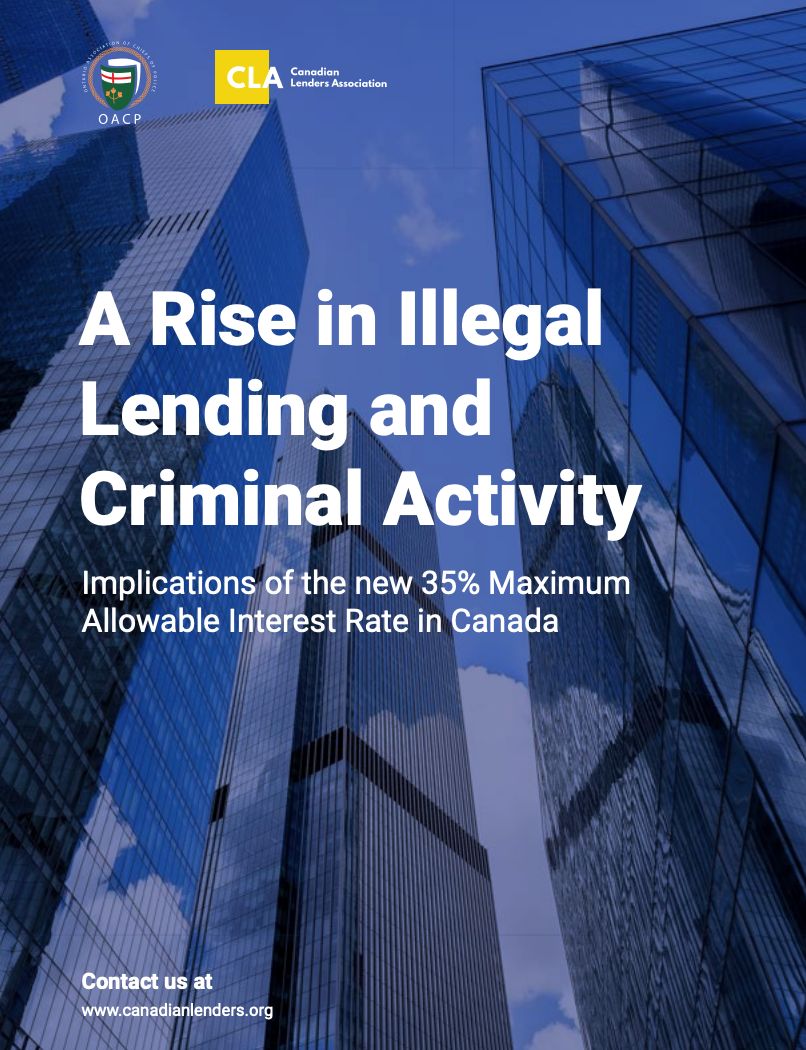Implications of the new 35% Maximum Allowable Interest Rate in Canada
This report explores the potential repercussions of lowering the maximum allowable interest rate in Section 347 of the Criminal Code of Canada. In the last federal budget, the Liberal government in Canada moved to decrease the maximum allowable rate of interest that lenders may charge on loans from 60 percent effective annual rate (EAR), (equivalent to 47 percent annual percentage rate (APR)) down to 35 percent APR. This paper highlights the impact of this rate reduction on the impacted borrowers: non-prime Canadians.
Ultimately, this paper asserts that the lowering of the maximum allowable rate of interest to 35% will push approximately 4.7 million people to payday lending or illegal lending. Further, a significant number of regulated lenders will need to exit the market due to their inability to serve the higher-risk non-prime segment following the rate decrease. As international examples demonstrate, the reduction of access to credit in those markets led to an increase in criminal activities, including noncompliant lending and loan sharking and links to organized crime. In conclusion, this paper argues that the federal decision to lower the maximum allowable interest rate is misguided and will inadvertently contribute to an upsurge in criminal activities in Canada.
Sponsored by:
Authors:
Download the white paper on Rise in Illegal Lending & Criminal Activity >>
Implications of the new 35% Maximum Allowable Interest Rate in Canada

